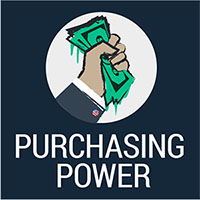Once viewed as an election cycle that would serve to increase the Republican majority in the United States Senate, 2018 is proving to be a year of opportunity for Democrats. The Democrats are tasked with defending 26 seats, nine of which come from states that Donald Trump won in 2016. Meanwhile, Republicans are tasked with defending nine seats, and only one of them comes from a state that Hillary Clinton won. Yet given the relatively stable unpopularity of President Trump and growing disappointment with the Republican Congress, Democrats are poised to compete in Arizona, Tennessee, and Texas, in addition to the vulnerable Nevada seat occupied by Dean Heller.
Given the increase in competition, a flood of money has poured into these competitive races, with much of it coming from the outside. Independent expenditure groups aligned with Republican Senate Majority Leader Mitch McConnell have nearly $44 million on hand, having raised $22 million in the previous quarter alone. But there appears to be even more money on the left. Fifty-four liberal independent expenditure groups, twice as many as the last midterm election, have spent at least $100,000. Indeed, the liberal super PAC Senate Majority PAC has raised more than its GOP counterpart. Senate Majority recently announced that it plans to spend $80 million on advertising alone, with another $20 million on voter mobilization efforts.
With liberal groups outraising conservative groups, the news that the Koch Brothers are moving away from supporting Republican candidates has further struck fear in the Republican Party and conservatives, so much so that they are directing mega-donors away from the Koch Brothers’ super PAC, Americans for Prosperity.
Yet, is all this attention on independent expenditure group activity warranted? In our research on the effects of independent expenditure group spending on Senate elections, Colleen Holloway and I find that outside spending in Senate races has increased since the landmark Citizens United v. FEC and the lesser-known case Speechnow.org v. FEC. Outside expenditures have grown from an average of about $3 million per Senate race in 2010 to just over $8 million per senate race in 2014. In 2016, in Pennsylvania alone, $119 million dollars was spent by outside groups in support of their respective candidates. In Wisconsin, outside groups have spent $18.4 million in an effort to impact the 2018 Senate election.
Still, in our research, we found that the overall effect of independent expenditures is relatively small when compared to expenditures made by campaigns. We collected data on campaign and independent expenditure group spending using information from the Center for Responsive Politics from 2010 to 2014. One of the problems with examining independent expenditures is that much of the funds come from “dark money” where groups hide the amount of money they raised as well as the identity of their donors. To verify that the information we had was correct, we correlated the amount of money spent by independent expenditure groups with the number of ads run by independent expenditure groups in each respective race (using data from the Wesleyan Media Project). While the correlation is not perfect, there is enough evidence to suggest that the numbers reported by the Center for Responsive Politics captured a majority of the expenditures.
Using a fixed effects regression model controlling for factors like the quality of the challenger (i.e. governor, statewide office holder, etc.), the ideology of the state, and the party of the incumbent, we find that outside money spent in support of the incumbent had a significant and positive effect. However, outside money spent in opposition of the incumbent had no effect on the incumbent’s overall vote share. Similarly, when we analyzed the effect of outside spending on challengers, we found that outside spending in support of the challenger again had a significant and positive impact on the challenger’s vote share, as did the inverse; outside spending against the challenger had a significant and negative impact on the challenger’s vote share. Still, this effect was eclipsed by the effect of the campaign’s expenditures. Indeed, the effect of campaign expenditures is five times that of independent expenditures.
All that is to say that while the amount of independent expenditures continues to increase for Senate elections, the effects of independent expenditures on election outcomes are marginal when compared to expenditures made by campaigns. This seems to be driven in part by the fact that independent expenditures overwhelmingly consist of ad buys. Indeed, groups seem to have realized the marginal effect of expenditures on ad buys as they have pivoted to fieldwork, voter mobilization, and opposition research. It is likely here that independent expenditure groups will find greater success than what they have thus far found in ad expenditures.
Neilan Chaturvedi is Assistant Professor of Political Science at California Polytechnic University, Pomona. His recent research focuses on elections, public opinion, and legislative behavior, with a particular focus on the United States Senate.
 |
Purchasing Power: The ConversationThis post is part of the special series designed to provide well-informed commentary, fresh questions, and new answers about the facts of money in politics. Dive in to 'Purchasing Power: The Conversation’ here. The views expressed by blog contributors are the authors’ own and not necessarily the views of the Brennan Center.
|